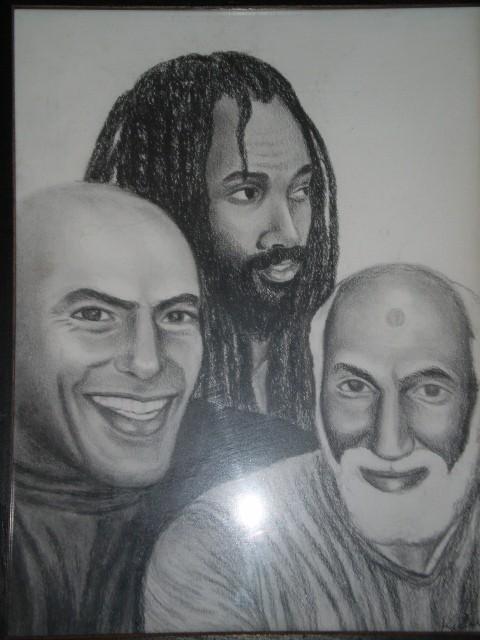Video Interview With Kiilu Nyasha:
By
(visit Kiilu's new website here)
Kiilu Nyasha is a San Francisco-based journalist and former member of the Black Panther Party (BPP). Kiilu hosts a weekly TV program, "Freedom Is A Constant Struggle," on SF Live (Comcast 76 and AT&T 99), which can be viewed live here on Friday at 7:30 pm (PST), and rebroadcast Saturdays at 3:30 p.m., and Mondays, 6:30 p.m.. She writes for several publications, including the SF Bay View Newspaper and BlackCommentator.com. Also an accomplished radio programmer, she has worked for KPFA (Berkeley), SF Liberation Radio, Free Radio Berkeley, and KPOO in SF. Some of her work is archived at www.kpfa.org. and www.myspace.com/official_kiilu
This new video interview conducted in November, 2009 in

by Kiilu Nyasha
November 22, 2009
President Barack Obama has clearly stated, “We don’t torture.”
Oh, yes we do. Big time.
A myriad of studies have clearly shown that human beings are social creatures – making prolonged isolation torture.
The New Yorker published an article March 30, 2009 by Atul Gawande titled, Hellhole: The United States holds tens of thousands of inmates in long-term solitary confinement. Is this torture?
Gawande asks, “If prolonged isolation is – as research and experience have confirmed for decades –so objectively horrifying, so intrinsically cruel, how did we end up with a prison system that may subject more of our own citizens to it than any other country in history has?”
By 2000, some 60 supermax prisons had been opened nationwide, in addition to new isolation units in nearly all maximum-security prisons.
The first such gulag was established in 1983 in
They’re confined 24 hours a day, seven days a week, every day of the year with just a brief time (when permitted) in the “dog run” or outdoor enclosure for solitary exercise with no equipment, not even a ball.
But after nearly 20 years,
Nationwide, at least 25,000 prisoners are in solitary confinement with another 50-80,000 in segregation units, many additionally isolated but those numbers are not released.
According to The Washington Post, a spokesperson for the Bureau of Prisons reported there are 216 so-called international terrorists and 139 so-called domestic terrorists currently in federal facilities (I’m convinced the real terrorists are on Capitol Hill). No one has ever escaped from these “most secure prisons.”
In a 60 Minutes segment titled, Supermax: A Clean Version of Hell (revisited), June 21, 2009, the reporters took cameras into the ADX-Florence, Colorado Supermax where there have been six wardens since it opened in 1994. It’s where Imam Jalil al-Amin and Mutulu Shakur are held captive, along with myriad other political prisoners.
One former warden stated, “I don’t know what hell is, but I do know the assumption would be, for a free person, it’s pretty close to it.”
“Supermax is the place America sends the prisoners it wants to punish the most – a place the warden described as a clean version of hell.”
In a national study (Hayes and Rowan 1988) of 401 suicides in U.S. prisons —one of the largest studies of its kind—two out of every three people who committed suicide were being held in a control unit.
In one year, 2005, a record 44 prisoners killed themselves in California alone; 70 percent of those suicides occurred in segregation units
Bret Grote is an investigator and organizer with Human Rights Coalition/Fed Up!, a prisoner rights/prison abolitionist organization based in Pittsburgh, Pennsylvania.
In the Angola 3 Newsletter, Grote details how HRC/Fed Up! Documented many hundreds of human rights abuses in
Supermax prisons can also contain death rows where prisoners can spend decades in isolation, torture, with the added torment of impending execution. One obvious example is the highly political case of former Black Panther, journalist and author, Mumia Abu-Jamal, falsely convicted of killing a cop in 1981. Despite hard evidence of innocence, he’s still locked up in SCI Green, a Pennsylvania Supermax, after 27 years on death row and the signing of two death warrants.
These conditions are a flagrant violation of article 6 of the U.S. Constitution which affirms that treaty law (i.e. international law) is the “supreme law of the land.” Thus, article 10 (3) of the International Covenant on Civil and Political Rights stipulates that “The penitentiary system shall comprise treatment of prisoners the essential aim of which shall be their reformation and social rehabilitation.”
Contrary to the lock-em-up-and-throw-away-the-key rhetoric of politicians, A Zogby poll released in April 2006 found 87 percent of Americans favor rehabilitative services for prisoners as opposed to punishment only.
The Commission on Safety and Abuse in
One of the most egregious cases of prolonged torture is the politically-charged isolation of Hugo Pinell still held in
“In much the same way that a previous generation of Americans countenanced legalized segregation,” writes Gawande, “ours has countenanced legalized torture. And there is no clearer manifestation of this than our routine use of solitary confinement – on our own people, in our own communities, in a supermax prison, for example, that is a 30-minute drive from my home.”
In the words of Friedrich Nietzsche, Distrust all in whom the impulse to punish is powerful!
Power to the people!
--
No comments:
Post a Comment
Note: Only a member of this blog may post a comment.